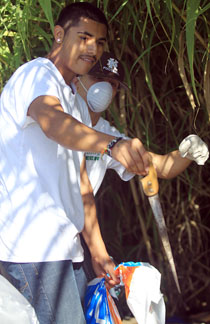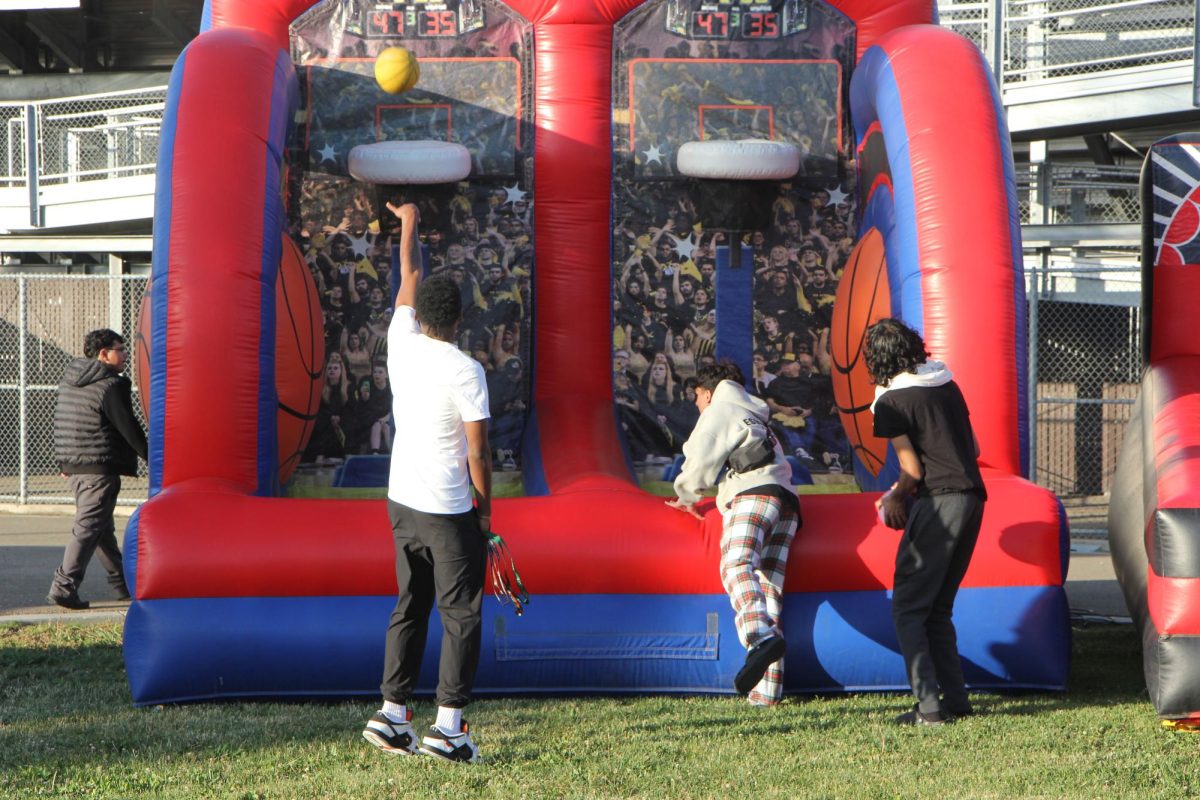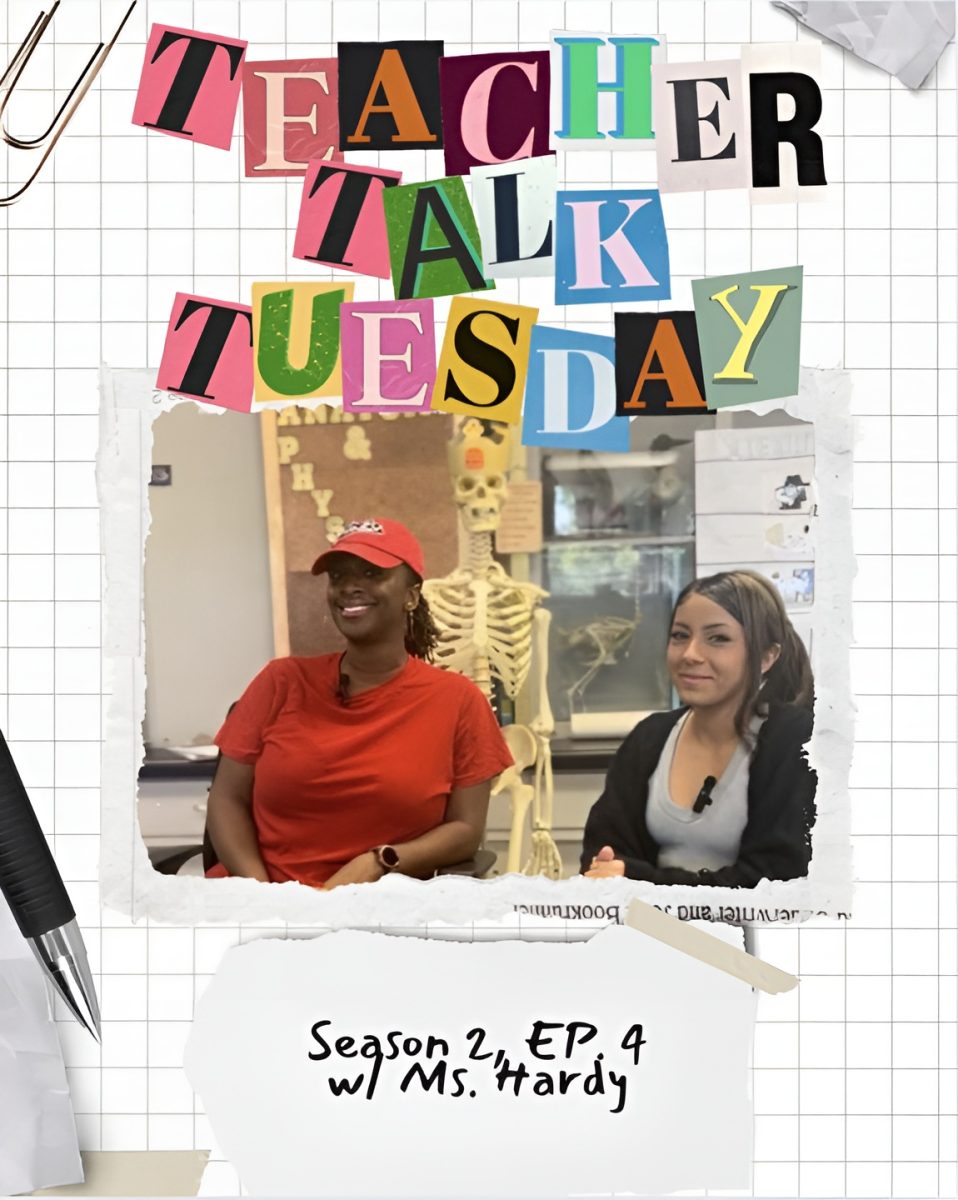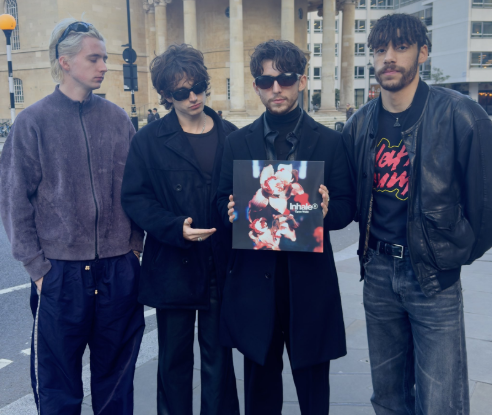Letting a plastic bag blow by. Throwing a gum wrapper on the ground. Dumping oil in the street drain. What do these things have in common?
The Calaveras River.
“Every decision you make can affect the river,” said Donnie Ratcliff, habitat restoration coordinator with the U.S. Fish and Wildlife Service.
With this (or perhaps community service hours) in mind, nearly 200 volunteers came out last Saturday for the annual Coastal Cleanup event. The group was much larger than last year’s turnout, a mix of Stagg students from various schools, teachers, community members, and even a couple or two on a date, like seniors Janet Phanh and Stephen To.
“We decided to use our time wisely and help out the environment,” To said of their date.
“It felt good to help in the community,” agreed Phanh.
Several Stagg students were into double digits of nonstop community service hours, having participated in the Kids in a Box event the night before. Senior Julian De Los Santos was one such volunteer. “I’m losing my voice, slept in a box, and now I’m cleaning up more boxes,” he said.
Community service hours were simply an added bonus for some students, like senior Brantley Melvin and sophomore Sami Nand.
“I like to help out my community whether I’m getting community service hours or not,” said Melvin who was there with Key Club.
“What made me come back this year was wanting to help,” Nand said, who attended last year’s Cleanup as well. “I’m doing this out of the goodness of myself.”
Beyond personal fulfillment, the Coastal Cleanup is a benefit to the entire community, as well as fish and other organisms in the Calaveras.
People don’t realize the affect the river had on the quality of life of the community and the river’s organism, Ratcliff said.
UOP professor of biology Stacy Luthy reiterated this point in speaking to the group of volunteers. “You have a vested interest in making sure (the river) is clean,” she said.
“Coastal Cleanup day should be every day,” said Jeremy Turhune, coordinator of Friends of the Lower Calaveras. “One day a year isn’t enough. This is our drinking water… we have endangered animals in (and around) the river.”
In trying to preserve the river, Terhune invites any interested students to join Friends of the Lower Calaveras by contacting him via email at [email protected].
There’s a lot of interesting history to the Calaveras that people aren’t aware of, Terhune said, such as the name itself.
The origin of the name, which translates to River of Skulls, is based upon explorers finding a pile of Native American bones in a watershed of the river.
“I’m waiting for a Stagg High School garage band named River of Skulls,” Terhune said. “That would be awesome.”
Not everything pulled out of the river had been as dramatic as a pile of bones, but organizers have seen their share of unusual debris at Coastal Cleanups. The strangest thing they found in all of the California Cleanup events last year was “a dead cow in a bag,” Terhune said. This year, however, was much tamer than those of the past, the cleanup producing items like broken lawn chairs. This may be because of different cleaning requirements than years before, volunteers being informed partway through the cleanup that they were not to clean up the homeless dens.
The excitement of other years perhaps makes up for this year. Two years ago, Luthy said, a volunteer thought they had found a dead body in the river, but were relieved to find that it was only a blow-up doll.













